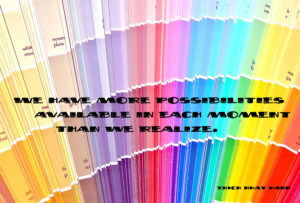
Rule of Three
I want to talk about the idea of false dichotomy, because they’re both so easy and so destructive.
The tendency to falsely dichotomize (AKA splitting, black-and-white thinking) has been a central issue in psychotherapy since Freud, Kernberg, and Klein. You’ve got two hands and two eyes and two brain hemispheres. There are “two sides to every story.” It so often seems like there is yes-and-no, for-or-against, right-or-wrong. Worse…. Conservative-liberal, masculine-feminine, us-them.
And that’s probably because our brains – beautiful, complex systems that they are – often use dichotomization to help us live faster in the world. (More on this in a future post.)
This happens often, and to our detriment. (Serious statisticians seem to be the only people who really know this!) Clients limit their own options, we constrain our therapeutic directions, and we stifle our diagnostics and conceptualizations.
And the trick to not falsely dichotomizing is oh-so-simple. Just make the rule of three. All questions have at least 3 answers. Don’t do an ethical decision making model without at least 3 choices of possible actions to evaluate. Put at least 3 empty bullet points on your treatment plan template. Make a deal with your consultation partner – not just playing devil’s advocate (which is a great role for them), but playing the role of horizon-broadener. When you create counterthoughts in cognitive work, make at least three. Prep all of your clinical worksheets to match. When you evaluate the “B” in the REBT method, identify at least 3 possible beliefs. When you delineate clients’ values in ACT, make 3 the minimum magic number for actions-in-pursuit-of-values. When you and a client are interpreting a dream, include at least 3 hypotheses.
Don’t worry… you won’t end up limited to just 3 and end up unwittingly stuck again. Three gets you out of falsely dichotomizing and things really open up from there.
Comment: When have you noticed false dichotomies in session?